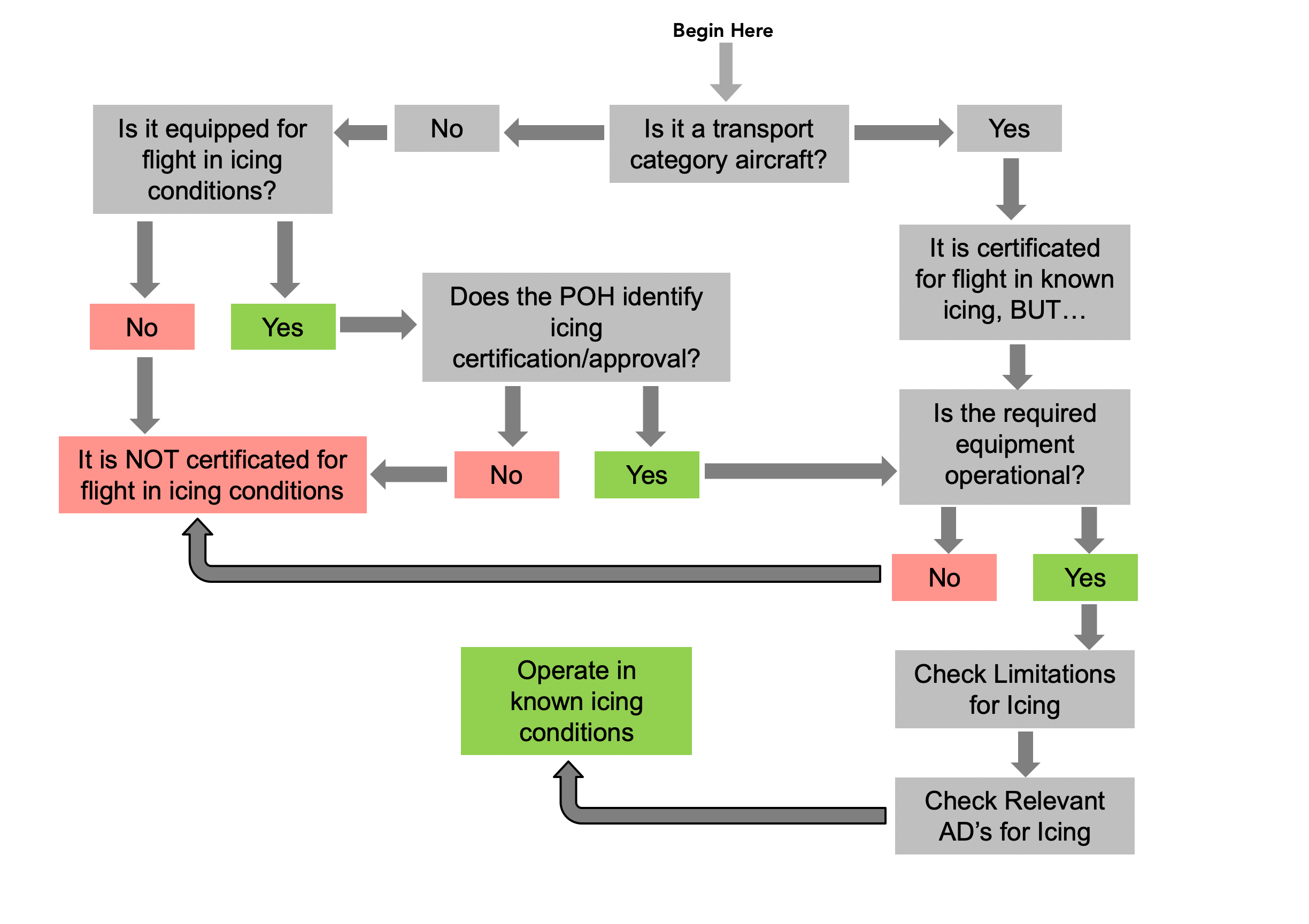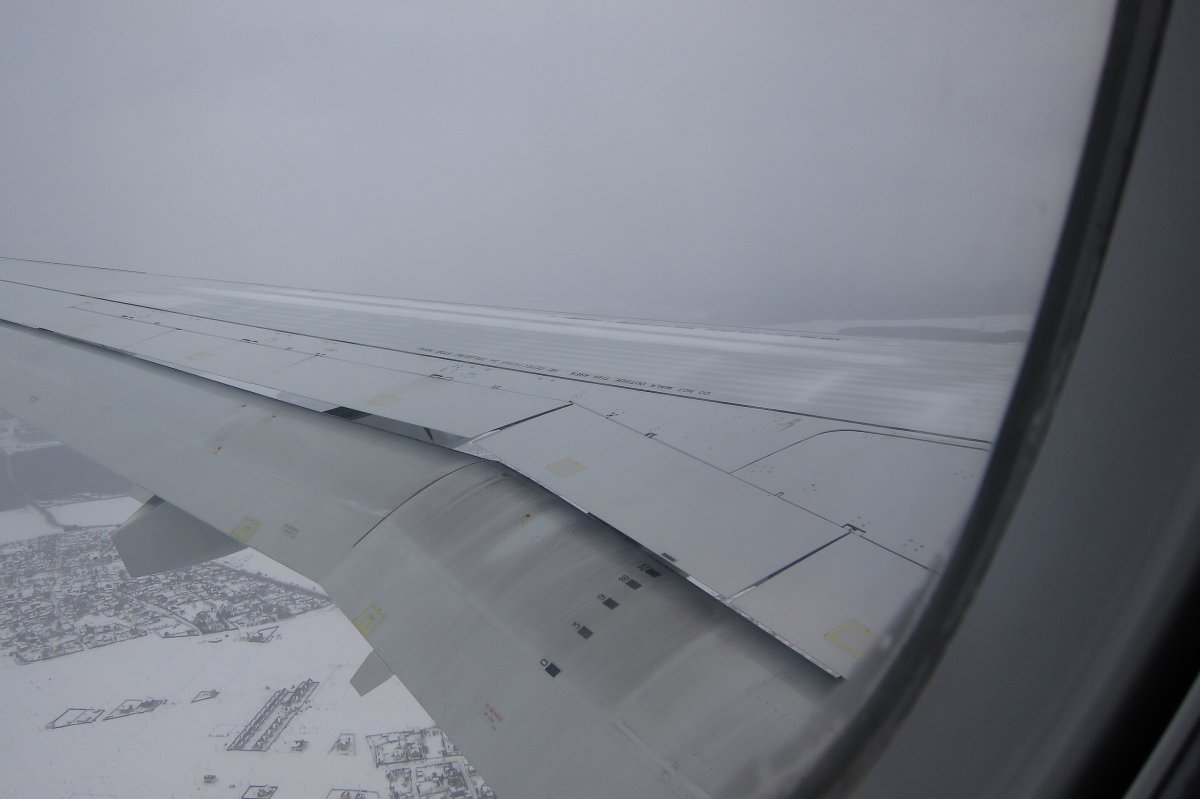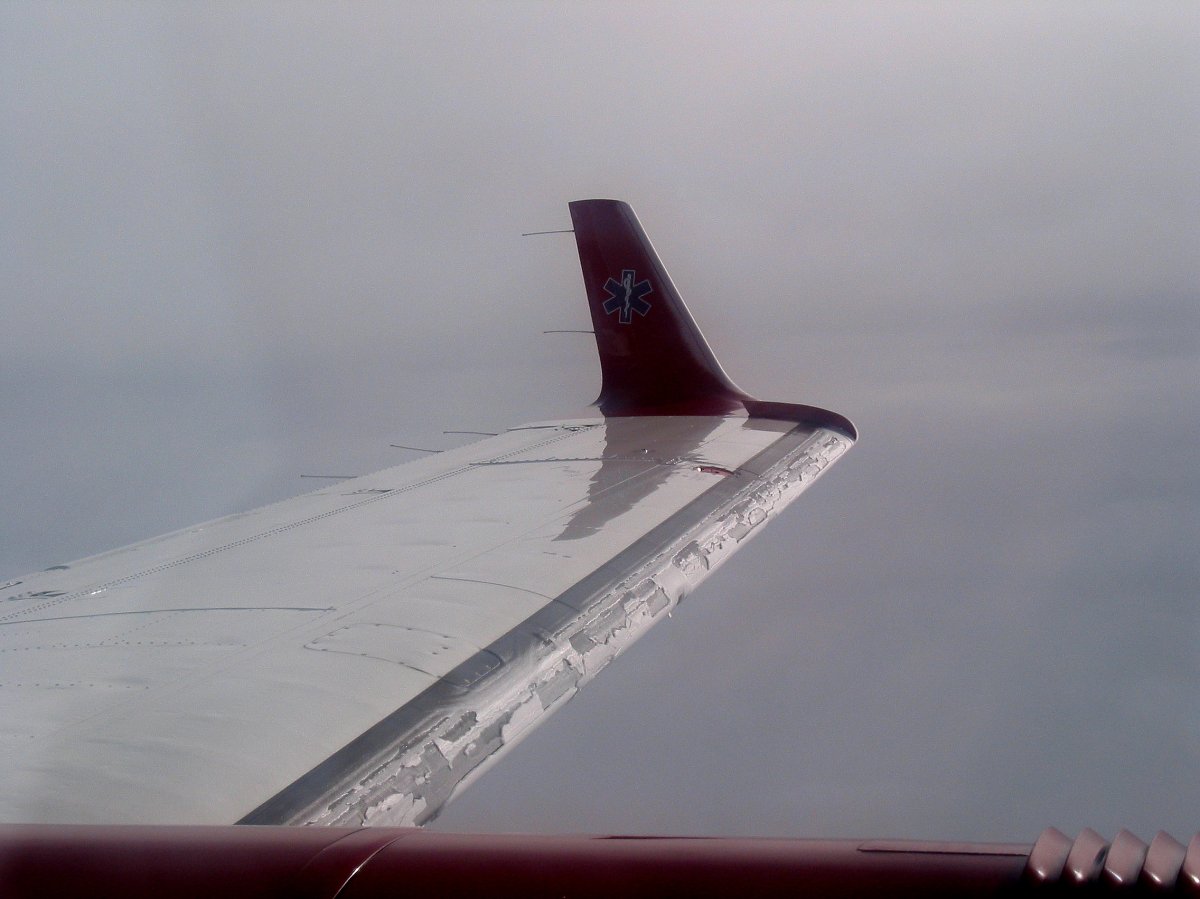Icing Certification Overview
The existence of ice protection equipment DOES NOT mean the aircraft is certificated or approved for flight in known icing conditions.

ICING certification OVERVIEW
Is the Aircraft Certificated for Flight in Known Icing (FIKI)?
The icing certification status of non-transport category aircraft can be obscure. Aircraft can be equipped with limited ice protection equipment and still not be certificated for flight in icing, and many are. The only valid sources of this information are the Airplane Flight Manual or the Pilot's Operating Handbook for the specific serial number aircraft in question.
If the certification can be confirmed, the configuration and equipage of the aircraft must conform to the certification requirements. Further, all required ice protection equipment must be operative.
The flowchart at left provides a decision process for determining the aircraft's icing certification status on any given day. The FAA Ice-Induced Stall Training Video also provides some good information on this question. Further guidance is found in the two Advisory Circulars cited below, AC 91-74 and AC 20-73.
ICING CERTIFICATION OVERVIEW
Advisory Circular 91-74
"Pilots must determine if the aircraft to be flown is certificated for flight in icing conditions. An aircraft that is certificated for instrument flight rules (IFR) is not necessarily certificated for flight in icing conditions. To determine whether an aircraft is certificated for flight in icing conditions, the AFM or specific POH must be consulted. It is imperative that the pilot ensure the aircraft is certificated to fly in icing conditions and that the appropriate deicing/anti-icing equipment is installed and operational prior to operating in icing conditions. It is also critical that the pilot understand and comply with the applicable limitations and procedures when operating in icing conditions."
ICING CERTIFICATION OVERVIEW
Advisory Circular 20-73
"The limitations section of the AFM should include, as applicable, a statement similar to the following: “In icing conditions, the airplane must be operated and its ice protection systems used as described in the operating procedures section of this manual. Where specific operational speeds and performance information have been established for such conditions, this information must be used.” Include in the limitations section of the AFM the following, as appropriate"
- The minimum operating airspeed for each normal aircraft configuration whenever ice exists on the critical surfaces.
- Instructions to activate the engine anti-ice system when the aircraft encounters Instrument Meteorological Conditions (IMC) at an altitude near or above the freezing level.
- Landing weight limits that include the effects on aircraft performance when the IPS is activated. You should consider the effects of residual ice on the aircraft lift and drag, thrust loss associated with operation of the IPS, and the airplane performance at the recommended operating speeds. You may present these weight limits in the performance information section of the AFM and include them as aircraft limits by specific reference in the AFM’s FAA-approved limitations section.
- Limits on operating time for ice protection equipment, if these limitations are based on fluid anti-ice/deice systems capacities and flow rates.
- Airspeed limits (if any) and the minimum temperature at which the deicing boots may be operated.
- Environmental limits for operating deicer boots, such as minimum temperature and maximum altitude for boot operation.
- Minimum engine rpm or power setting necessary for the airframe IPS to function properly.
- A list of required placards.
- Severe icing warnings."


